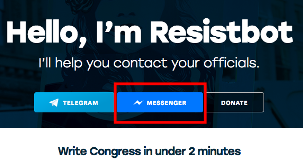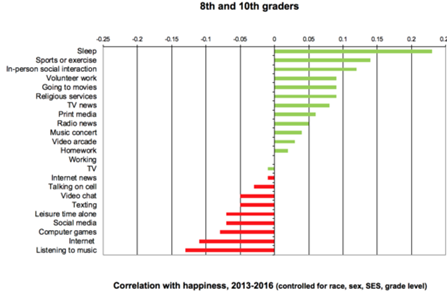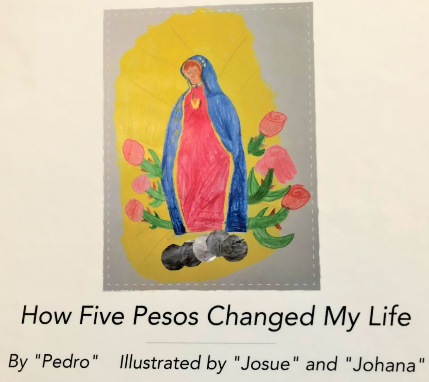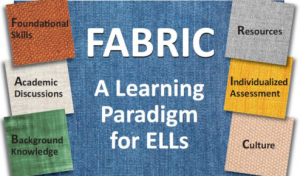NJ Teachers of English to Speakers of Other Languages/
NJ Bilingual Educators
ARTICLES
Adult Education: Andrea Fonteñez- Adult Education for ELLs in New Brunswick
Bilingual/ESL Early Childhood/Pre-K-K: Jessica Perdomo-O’Hara- Meet Your New Representative
Bilingual Elementary 1-8: Jack Meyers- Start Making Big Changes Right Now
Bilingual/ESL Middle School: Michelle Land- The Pursuit of Happiness
ESL Elementary 1-5: Alamelu Sundaram-Walters- Strategies for Teaching ELLs
ESL Secondary: Hana Prashker- Wearing Two Hats
Higher Education: Diana Sefchik- Reflections on the Fall Semester
Parent and Community Action: Angeline Sturgis- Telling the Family Story
Special Education: Sonya Bertini- Testing Accommodations for ELLs
Supervisors’: Laura Arredondo- Your New SIG Representative
Teacher Education: Lisa Rose Johnson- Introducing FABRIC to Pre-service Educators
Features Winter 2019- Learning from the past to guide our future.
Adult Education Special Interest Group
Adult Education for English Language Learners (ELLs) in New Brunswick
By Andrea Fonteñez
 Adult education in New Jersey has taken on a different look than it had twenty years ago. Today, adult education is servicing adults in the workforce who are in need of English language skills and who are also unable to read and write in their native language. While over 17% of adults in New Jersey lack basic literacy skills, adult education also services high school students unable to complete a high school diploma in the allotted time frame.
Adult education in New Jersey has taken on a different look than it had twenty years ago. Today, adult education is servicing adults in the workforce who are in need of English language skills and who are also unable to read and write in their native language. While over 17% of adults in New Jersey lack basic literacy skills, adult education also services high school students unable to complete a high school diploma in the allotted time frame.
To meet the increasing demand for adult education, New Brunswick Adult Learning Center (NBALC) offers a Basic Education Program in Basic Skills in English and Spanish, and English as a Second Language (ESL) instruction. Adult students are given placement assessments such as the Locator Test TABE ® (Test of Adult Basic Education developed and published by CTB/McGraw-Hill LLC) for English speaking students and the SUPERA 18 and 19/20 form for non-English speakers (developed and published by CTB/McGraw-Hill LLC). These assessments, in addition to students’ past academic records if available, help determine the level of education of the students and allow the NBALC to assign students to courses that meet their needs.
Currently, the New Brunswick Adult Learning Center not only offers courses needed for a High School Diploma or High School Equivalency Diploma, but, also, ESL for non-English speakers and citizenship courses. The registration procedures and courses are aligned with what the New Jersey Adult Education Department recommends, “Students are held accountable for the statewide assessment in effect at the time they meet all other graduation requirements. Courses are varied to meet the educational needs of adults. For each student enrolled, an educational plan is developed reflecting: a) past academic record; b) an analysis of past experiences for which credits may be awarded; c) graduation requirements; and d) a proposed schedule of courses leading to completion of the requirements for graduation.” (Retrieved from https://www.state.nj.us/education/students/adulted/ahsp/).
At the New Brunswick Adult Learning Center, adult students can obtain their High School Equivalency Diploma by taking and successfully passing the high school equivalency test TASCTM (Test Assessing Secondary Completion). Since New Brunswick Adult Learning Center is a state testing center, all adult students who live in New Jersey can come to the center and register to take the TASCTM assessment which is offered in English and in Spanish. The TASCTM exam is available at the center every other week. To prepare for this exam, the New Brunswick adult program offers classes in six levels of ESL as well as Basic Skills for adults (grades K-5 to grades 6-12) in five subject areas: Math, Reading, Social Studies, Science, and Writing. These classes are offered in English and in Spanish.
In addition, New Brunswick Adult Learning Center has three other programs running simultaneously for adult education students: The Newcomer High School Equivalency Program for ELLs (English language learners), C.A.R.E.S. (Creating Alternative Routes for Educational Success, which is for New Brunswick students only), and New Jersey Youth Corps of Middlesex County sponsored by New Brunswick Public Schools and the Adult Learning Center.
The Newcomer High School Equivalency Program (NHSE) for ELLs (English language learners) has been designed with the purpose to meet the needs of students with an interrupted formal education. This program targets students who are 18 years old or older. This program is for newcomer students who have just arrived in the United States and who are academically delayed because of limited or inadequate schooling in their native Spanish speaking countries, and, who are three or more years below grade level. NHSE students take the TASCTM Exam in Spanish after program completion and are able to obtain their High School Equivalency Diploma. It generally takes a NHSE student 1 to 2 years to successfully pass the exam.
The C.A.R.E.S. program (Creating Alternative Routes for Educational Success) is an alternate program of New Brunswick High School. The goals of the C.A.R.E.S. Program is twofold: to advance students who are overage and under credit and who will not be able to graduate by the time they turn 21 years old, and also to help students catch-up with their peers so they can return to New Brunswick High School and graduate with their cohorts. Students who attend this program obtain a regular high school diploma. Evening classes for credit recovery are also offered for New Brunswick High School and C.A.R.E.S. students, especially juniors and seniors. English language learners (ELLs) are not only able to attend and recover credits but also register for evening ESL classes to continue improving their English skills.
The JAG Program (Jobs for America’s Graduates) is part of the C.A.R.E.S. program and specifically targets at risk students. The JAG program consists of a comprehensive set of services designed to keep young people in school through graduation and improve the rate of success in achieving education and career goals. The ultimate goal is for participants to receive a high school diploma (or equivalent), secure a quality entry-level job in the workforce, and pursue post-secondary education, and/or seek career advancement opportunities.
Finally, the New Jersey Middlesex Youth Corps is a statewide program offered at the Adult Learning Center. This program is for students ages 16 to 25. This is a full time alternative high school equivalency program that requires parental consent and provides students with a work preparation component. Students learn through community service work and career exploration activities. The program admits sixteen students per year and provides them with intensive counseling. This program is also available for English language learners since it has a bilingual counselor, a bilingual teacher, a bilingual paraprofessional, and a bilingual worksite coordinator.
Adult education programs, such as the ones offered at New Brunswick Adult Learning Center, are very important since they not only allow students to obtain a high school diploma but also advance either in their educational careers or in the workforce. Programs like these are vital to adult ELLs, our communities, and our state.
Andrea Fonteñez, Ed.D. Adult Education Special Interest Group (SIG) Representative, Director of Bilingual/ESL Education, New Brunswick Public Schools afontenez@njtesol-njbe.org
Early Childhood ESL/Bilingual Special Interest Group
Meet your New Early Childhood ESL/Bilingual Group Representative
By Jessica Perdomo-O’Hara
Dear Members,
 My name is Jessica Perdomo-O’Hara and I am very excited and proud to be joining the NJTESOL/NJBE Executive Board as your Early Childhood ESL/Bilingual Representative. I have been teaching for 14 years: Kindergarten, Spanish, and ESL (English as a Second Language). I have taught at the high school, middle school, and elementary levels but my heart belongs to everything early childhood.
My name is Jessica Perdomo-O’Hara and I am very excited and proud to be joining the NJTESOL/NJBE Executive Board as your Early Childhood ESL/Bilingual Representative. I have been teaching for 14 years: Kindergarten, Spanish, and ESL (English as a Second Language). I have taught at the high school, middle school, and elementary levels but my heart belongs to everything early childhood.
In 2001, I graduated with a major in Industrial Engineering in Colombia, the beautiful country in which I grew up. This decision was made prior to having the opportunity to set foot in a classroom for the first time during my senior year of college, when I was asked by a friend of mine if I wanted to teach English to her preschool students.
I moved to the United States in 2001 shortly after graduating. In the United States, I decided to continue my education at Kean University, graduating with a double major in Spanish and Industrial Technology. Then I pursued an M.A. in Curriculum and Instruction, focusing on early childhood education. I am certified to teach preschool, elementary education, Spanish K-12, and ESL K-12. I also hold a Supervisors certificate.
I firmly believe that all children can learn with the right supports and learning environment. My classes are dynamic using a multimodal approach in my lessons; songs, repetitive exposure, TPR [Ed.:Total Physical Response, Asher] , and learning language in context, mostly connected through literacy. I teach using a cross curricular thematic approach. Repetitive exposure to the same material (Read Alouds, Math activities, games) is something you will see in my classes, as I have seen that it promotes long term learning.
Currently, I am fortunate enough to be enjoying my two passions, ESL and preschool, as a Pre-k ESL teacher in North Plainfield, where I have been working closely with children and their families for four years. Also, I am the district’s Prek-12 ESL Testing Proctor at the registrar’s office, and I am one of the first faces that families of English Learners (ELs) see when they register their child(ren).
As a child, I had a difficult time learning English, and the lack of support from my teacher made being an ELL (English language learner) much more difficult than what it really had to be. As ESL and bilingual educators, we have the power to alleviate the pressure that ELLs feel when coming to a new school system, a new community, where they do not know anyone. Just a warm greeting can make them feel comfortable and accepted, and offer a sense of belonging that truly can make a difference in their lives. We advocate for our children tirelessly, and being their voice can change how much support they will get, and when they will get it. It is all about them.
I am proud to be an ESL teacher because that goal that was the goal in the center of my heart when I decided to become a teacher. I change the world every day, one child at a time, and YOU do, too. I save the notes, the cards, and memories. They carry me through busy days in which teaching can be difficult. I hope you are as proud as I am to have a special place in your students’ hearts, knowing that you are making a difference in your school, your town, and your community.
I look forward to facilitating purposeful Early Childhood discussion and learning from one another. Please get in touch with any questions you may have. Talk to you soon.
Jessica Perdomo-O’Hara is the NJTESOL/NJBE ESL/Bilingual Early Childhood SIG Representative. She teaches Pre-k ESL at North Plainfield Public Schools.
Bilingual Elementary Special Interest Group
Start Making Big Changes Right Now
By Jack Meyers
Those of us working in the education field know that if you want to make a positive, long-lasting impact on the future of the world, our classrooms are at the frontlines. Students and teachers are in the perfect position to create change for the better. In the classroom, we encourage students to collaborate, evaluate sources of information, analyze and solve problems, create new solutions, innovate, make connections, empathize, and lift each other up. I am here to tell you that all of those glorious one-off activities, assignments, and group projects that never cease to light the fire in you and your students are just the beginning.
There are resources available to all that will take the dynamism and inspiration you have been brewing in your classrooms out into the world-at-large. One of those resources is a digital tool called Resist Bot. Don’t fret on the name too much, as it is simply a call-to-action for any and all who are willing to participate in democracy. Resist Bot is democracy in its purest form; it is representation at its finest. This tool allows you, and even your students, to voice your concerns to your local, state, and federal representatives about the issues that matter most to you. Resist Bot is easy, convenient, and… did somebody say free? Yes, it’s free of charge, and we all love free.
While we are all certainly aware that politics can be a muddy game to play, and often rules are broken and favorites are played, and the choices made for our students are not always in their best interests, now we can make space for their voices on the broader scale. There is nothing quite so empowering to students as being seen, being heard, and having their opinions and ideas valued.
Do yourself and your students a favor and take your empowerment to the next level. Take your inspiration, your optimism, and your passion for change outside of your classroom to help others. If we want our future generations to collaborate, we have got to be the best models that we can be for that practice.
Now, I am about to walk you through your new favorite classroom project: Civics 101. Let me show you how you can get the word out about the vital issues in our nation and get your students involved, too.
How to navigate Resist Bot: Please find step-by-step instructions below and get the change-making going!
1. Go to Resist Bot and choose your method of contact. For this example, you will see how to use Resist Bot on Facebook! 
2. Introduce yourself. (This may be a robot, but let’s be behavioral models for our students, shall we?) Pro-tip: If you don’t want to use your own address, use the mailing address of the library in your town.
3. Pick your representative. You can always go back and choose another elected official because Resist Bot saves your information.
4. Review your message and send. (Side note: This took me no more than about 15 minutes altogether).
Now go get out there and make a difference – for you, for your students and their families, and for the good of all people who want to make a better life for themselves and the people around them.
Sincerely, your friendly, neighborhood bilingual teacher, Jack
P.S. If you’ve ever wanted an activity that is both inter-disciplinary and which lends itself perfectly to differentiation, check out Teach Hub. This website has a ton of meaningful and high-interest lesson plans and ideas for activities that will allow you to marry critical thinking with critical content.
Another fascinating tool is iCivics, which is a website with games, lesson ideas, and standardized unit plans that you can easily integrate into ESL lessons, Social Studies, and even Reading and Writing activities.
Jack Meyers, Bilingual Elementary Special Interest Group Representative
ESL Middle School Special Interest Group
The Pursuit of Happiness
By Michelle Land
When we introduce our students to the Preamble to the United States Declaration of Independence, “We hold these truths to be self-evident, that all men are created equal, that they are endowed, by their Creator, with certain unalienable rights, that among these are life, liberty, and the pursuit of happiness”, does anyone question why the pursuit of happiness would be included in a country’s founding document? One wonders, did our forefathers anticipate how elusive happiness can be in this day and age?
One professor at Yale has recognized that students are often struggling to find happiness. Laurie Santos has created the most popular course in Yale history, “Psychology and The Good Life”. Why has this course become so popular, and is it for real? In actuality, there are over 1,200 students enrolled, and most of them are not happy. They are not alone.
According to Jean M Twenge, Ph.D., in “Psychology Today”, teens’ well-being dropped suddenly around the time smartphones became common (2011-2012)1 The results are diagrammed in the chart below.
 Smart Phones are not the only culprit, according to Santos. “‘College students are much more overwhelmed, much more stressed, much more anxious, and much more depressed than they have ever been. I think we really have a crisis writ large at colleges in how students are doing in terms of self-care and mental health.” 2
Smart Phones are not the only culprit, according to Santos. “‘College students are much more overwhelmed, much more stressed, much more anxious, and much more depressed than they have ever been. I think we really have a crisis writ large at colleges in how students are doing in terms of self-care and mental health.” 2
In fact, a recent survey done by the American College Health Association found that 52 percent of students reported feeling hopeless. 3 It has been reported that, between 2005 and 2014, there has been a 37 percent increase in the number of teens each year who have had a depressive episode.4 In addition, high school students have more anxiety symptoms and are twice as likely to see a mental health professional as teens in the 1980s.5
Our ELLs (English language learners) are not immune to this phenomenon. Many of them have more stressors and difficult situations in their lives. An example is leaving family members and friends behind in their home country. Another example is struggling to find their place in a new school, town, and world.
The good news is that there are seven aspects of happy people, and they are things everyone can try to do, no matter what the language skills are.
They include: 1. relationships, 2. acts of kindness, 3. flow, 4. exercise/physical well-being, 5. strengths/virtues, 6. spiritual engagement and 7. meaning, positive minds.
We can strengthen these aspects in order to achieve more happiness. The Yale course description outlines the outcomes expected: “The purpose of the course is to not only learn what psychological research says about what makes us happy but also to put those strategies into practice.” 6
But should we care if our students are happy? Indeed, we should! On average, students who reported being happier had higher grades. Specifically, there was a statistically significant correlation between happiness and students’ GPA (Grade Point Average) from elementary school through high school.7
If you are interested in taking a happiness quiz, try this link: https://www.pursuit-of-happiness.org/science-of-happiness/happiness-quiz/. When done, you can read more about the basic recommendations for having a happier life.
 So, let’s get happy!
So, let’s get happy!
As musician Pharrell wrote,
“It might seem crazy what I’m ’bout to say”.
“Huh, because I’m happy
Clap along if you feel like a room without a roof
Because I’m happy
Clap along if you feel like happiness is the truth
Because I’m happy
Clap along if you know what happiness is to you
Because I’m happy
Clap along if you feel like that’s what you wanna do”
Michelle Land is the NJTESOL/NJBE Bilingual/ESL Middle School 6-8 SIG Representative. She teaches ESL at Randolph Township Schools.
1https://www.psychologytoday.com/intl/blog/our-changing-culture/201808/is-what-happy-teens-do 2https://www.thecut.com/2018/05/how-to-be-happy.html
3https://www.thecut.com/2018/05/how-to-be-happy.html
4Mojtabai, R., Olfson, M., & Han, B. (2016). National Trends in the Prevalence and Treatment of Depression in Adolescents and Young Adults. PEDIATRICS, 138(6), e20161878-e20161878. doi:10.1542/peds.2016-1878
5Twenge, J.M., (2015). Time Period and Birth Cohort Differences in Depressive Symptoms in the U.S., 1982–2013. Social Indicators Research 121(2), 437.
6https://www.coursera.org/learn/the-science-of-well-being
7http://theconversation.com/its-true-happier-students-get-higher-grades-41488
Elementary Education Special Interest Group
Strategies for Teaching English Language Learners
By Alamelu Sundaram-Walters
 Students have a range of emotions when they start (a new) school. Often they are excited to meet their teacher and meet old friends. They can also be nervous about having a new teacher, learning new classroom procedures and routines, and having to get to know new classmates. This is especially true for English language learners (ELLs). These students can also have the added stress of not entirely understanding directions from their teacher. Many classroom teachers tend to be focused on assessments and find it difficult to provide the correct support during the first few weeks to meet the needs of the ELLs in their classrooms. As ESL educators, it is our role to collaborate with the classroom teachers and other staff in our building. It is imperative that we work as a team to meet the needs of the ELLs in our schools. Here are some tips to share with teachers in your building in order to support ELLs.
Students have a range of emotions when they start (a new) school. Often they are excited to meet their teacher and meet old friends. They can also be nervous about having a new teacher, learning new classroom procedures and routines, and having to get to know new classmates. This is especially true for English language learners (ELLs). These students can also have the added stress of not entirely understanding directions from their teacher. Many classroom teachers tend to be focused on assessments and find it difficult to provide the correct support during the first few weeks to meet the needs of the ELLs in their classrooms. As ESL educators, it is our role to collaborate with the classroom teachers and other staff in our building. It is imperative that we work as a team to meet the needs of the ELLs in our schools. Here are some tips to share with teachers in your building in order to support ELLs.
Create a welcoming classroom environment.
When students feel safe and comfortable in their learning environment they will speak more, take more risks, and be happier overall. It helps to lower the students’ affective filters, which makes it easier for them to learn a new language.
Encourage diversity.
As you welcome a new student(s), encourage diversity through Responsive Classroom/Morning Meeting. This helps bring students together and foster respect and classroom unity. You can also create a diverse classroom library by choosing diverse books: classroom read-alouds and holiday texts. Invite parents to your classroom to share their cultures or have students present their culture to the class. Plan a cultural family night to bring the school together to foster unity and help ESL families feel part of the school community.
Get to know your students.
Students are motivated when they are reading and writing about topics that they find interesting. The beginning of the school year is a great time to give out student interest surveys.
Collaborate with colleagues.
Consistency across classes is highly beneficial to ELLs. Set up common vocabulary walls, sentence frames, and other scaffolds that benefit all students, but especially ELLs. Using these scaffolds with all students will help ELLs be more likely to take part.. This is especially true of intermediate and advanced ELLs that still require support but may become resistant to support that makes them feel different from their peers.
Label the room.
Primary students will benefit from having labels around the classroom to help them when they are writing. Upper grade teachers may want to label their classrooms if they have newcomer or lower level ELLs. One way to make labels helpful to older students is to add in synonyms, antonyms, or content area vocabulary. Labels for a classroom library help students independently choose books.
Create a list of websites for the classroom.
Now that most schools are a 1:1 school, teachers can create a list of commonly used school-friendly websites. In addition to the websites, teachers should have ESL students keep a printout of their username and passwords readily available.
Literacy websites:
https://www.getepic.com/ https://listenwise.com/ https://www.readworks.org/ https://newsela.com/
Alamelu Sundaram-Walters, ESL Elementary 1-5 Representative, Mount Laurel School District/ESL Teacher
ESL Secondary Education Special Interest Group
Wearing Two Hats
By Hana Prashker
 In NJTESOL/NJBE, I currently have two positions. One is ESL (English as a Second Language) Secondary SIG (Special Interest Group) Representative. The second is Bergen County Chapter Chair (President).
In NJTESOL/NJBE, I currently have two positions. One is ESL (English as a Second Language) Secondary SIG (Special Interest Group) Representative. The second is Bergen County Chapter Chair (President).
As the ESL Secondary SIG Representative, I try to keep up-to-date on information from the federal and state mandates. I interact with teachers around the state from Hotlist posts and suggest that they submit proposals for the Spring Conference. I participate in TESOL Interest Section Digests (similar to the NJTESOL/NJBE Hotlist) for interesting ideas for teaching ELLs (English language learners), and common and uncommon problems and (hopefully) possible solutions. I attend free webinars from various organizations and businesses (e.g., TESOL, Listenwise, Newsela, CommonLit, Echoes & Reflections). I interact with Executive Board members who are quite knowledgeable, helpful, and proactive. In order to create more communication about ELLs, I have also joined New Jersey School Counselor Association (NJSCA) to gain information from their newsletters and emails as well as suggest people to apply to present at their conferences. I am grateful that I have time and ability to voluntarily work with NJTESOL/NJBE.
As Bergen County Chair (President), I use the information gathered from national and state levels to inform local ELL teachers. So far this year, our chapter has had two excellent presentations from Make the Road New Jersey (https://www.maketheroadnj.org/) and ELL teachers from Fair Lawn Public Schools.
Nedia Morsy from Make the Road New Jersey gave Bergen County teachers and other attendees updates on how this organization may be able to help undocumented immigrants in our schools, the roles of schools for immigrant students, and the Alternative FAFSA for New Jersey Dreamers.
The second presentation was called “Outreach to ALL Stakeholders” by the ELL teachers from Fair Lawn Public Schools. The teachers presented their extensive repertoire of activities and workshops for students, paraprofessionals, teachers, parents, and the community. Their ideas included a pre- Back-to-School night for ELL parents, a Parent Tea, math nights, and introduction to community resources.
The Bergen County chapter plans to have 3 more meetings this year. On January 29, 2019, we plan to have Sharon Rosario, Education Program Specialist from Bergen County Department of Education, to present on ESSA, as well as resources for our ELLs and their families. On April 3rd, we will have “Lesson Sharing with Round-Table Discussions.” Our meetings take place in Alumni Hall, Fairleigh Dickinson University, 1000 River Road, Teaneck, NJ, from 4:15-5:30. We hope to see you there.
I feel quite fortunate to be so strongly connected to NJTESOL/NJBE through these two positions. As you move forward through your careers, you should consider becoming more involved in this organization.
Hana Prashker is the NJTESOL/NJBE ESL Secondary Representative and Bergen County Chair. She teaches ELLs in Dumont and Hasbrouck Heights Public Schools, Bergen County.
Higher Education Special Interest Group
Reflections on the Fall Semester
By Diana Sefchik
 The fall semester is over. Final exams have been given and grades have been posted. Now is the time to reflect on the work done this past semester. The students were attentive, came to class faithfully, submitted their homework assignments, and passed quizzes and tests.
The fall semester is over. Final exams have been given and grades have been posted. Now is the time to reflect on the work done this past semester. The students were attentive, came to class faithfully, submitted their homework assignments, and passed quizzes and tests.
The question is what happened when they took an exam? The exam grades were a bit discouraging. The students know the material but it seems they are unable to apply the concept on a larger scale. They know grammar rules but when it comes to editing essays to look for errors in word forms, verb shifts, parallelism, and syntax, the students falter.
In speaking to colleagues in higher education, this is a major concern for all of us. The students have lives; they are working and raising families and going to school. We question the amount of time the students put into the classes. At midterm time, I asked the students to reflect on their work. Some of the students were honest and said they did not put in enough time to pass the class. Other students said they are very devoted to the class. Unfortunately, their work in applying what they have learned in the class falls short.
As an ESL (English as a Second Language) teacher in higher education, strategies for retention of material have to be presented to the students. We teach grammar and reading and writing but now we really need to go back a few steps and work with the students on time management and study skills. As part of a speaking and listening class final portfolio, the students were asked questions about their semester work and overall educational background. One student said she learned to read in her country but was never obligated to read novels in her native language. This filled in a lot of the blanks in teaching ESL.
Because of this, it is now necessary to again strategize how to get the students to break down larger pieces of literature to read between the lines and look at the syntactical functions. We have to help our students develop more of an understanding of fluency. When we administer an exam, we tell the students to read through it first. If there is an editing passage on a grammar exam, the students are told to read the passage first. Most times students just jump to doing the answers. In speaking to my colleagues in higher education, we are all experiencing this dilemma.
We need to ask ourselves about what students are misreading. We need to anticipate vocabulary obstacles, punctuation indicators, rhetorical questions, voice, analogies, and the like. As we instruct about these areas, once again we need to remind ourselves we are teaching these areas for our students to become independent writers and readers. The students need to take our strategies and apply them to their own work. The strategies will in time help the students break down larger reading pieces to comprehend those pieces. The strategies will help the students self-correct and self-edit their writing pieces.
As the new semester looms on the horizon, as an ESL teacher, I need to revisit how I am implementing my strategies. I will practice with the students and, hopefully, they will then be able to internalize the strategies for reading and writing on a larger scale. We will continue to be the cheerleaders for our students and the conductors of very comprehensive classes. We need to make the learning stick and be carried out beyond our classroom. This is a challenge for all of us but we can do this as we all work together.
Diana Sefchik, Higher Education SIG Representative, Adjunct at Raritan Valley Community College and Seton Hall University
Parent and Community Special Interest Group
Telling the Family Story
By Angeline Sturgis
I first met “Pedro” last year when he came to school one afternoon in March to register his son and daughter for the first and second grades. He was carrying a Dollar Tree bag, and all of us who were in the school office that day were impressed by how organized this father was. He produced the children’s immunization records, school reports, current address, lease agreement, and birth certificates. We could see he was very shy and reluctant to speak English, but genuinely happy to have his children by his side.
We learned that “Pedro,” (not his real name) was a single father who had just driven to Virginia to collect his children after winning custody. It was a sad story but the way he told it made the children beam. It was obvious that they were delighted to be reunited. Ours would be their third school that year and the only question they had was, “Is there pizza on Fridays?” (Of course). They all held hands as we helped him with the registration process. I was excited to help this family become part of our little school and hoped they would be eager to join our family support group, Latinos Unidos.
For the last few years, I have been interviewing parents from our school, recording their immigration stories, and having their children provide illustrations which all become a hardcover book thanks to Shutterfly, an online publishing website.
I was interested to hear Pedro’s story but he was reluctant. He kept saying, “Nothing happened to me,” “I don’t have anything to tell,” and, “My life was like everyone else’s.” I didn’t believe him. Everyone has a story to tell. Finally, he agreed to come to my house one cold Sunday afternoon, and we began his contribution to our on-going “Telling the Family Story” project. In December, Pedro and his children were honored at one of our Latinos Unidos meetings. His story was read in English and Spanish as the illustrations were projected on a screen for the audience to see. There were tears, for sure, but also thunderous applause. The next day, Pedro sent me a Whatsapp text which read, “I have no words to thank you. I never thought I could tell my story and people would want to hear. Thank you from all my heart for making me see that my life is an example to others.”
Following is an abridged version of Pedro’s story, “How Five Pesos Changed My Life.”
I’ll be presenting it, with illustrations, at the annual NJTESOL/NJBE Spring Conference. Please plan to come to the presentation so you can learn how to reach out to all the Pedros in your life, too.
How Five Pesos Changed My Life
By “Pedro”
I was born in Mesones Hidalgo, Oaxaca, Mexico in 1985. When I was born, my mother went off to live in the city and left me with my grandmother. I lived with my grandparents and my uncle, who was a child. It was a hard life. We didn’t have anything. We had a house that we could pick up and move around. It was made of sticks and just provided us with a very small shelter. We had no furniture. We slept on mats. We lived on other people’s property but because my grandfather argued with them, and drank a lot we were always asked to leave. He fought with my grandmother and no one wanted to see that so we moved a lot. I never played with anyone. As soon as I was big enough, about 6 years old, I had to work. My attendance at school was very scarce. I was always stressed out about not having enough food, not having a lunch to bring to school, and having to work for my grandfather. I remember not having enough clothes or even having shoes to wear. We ate tortillas, iguanas, armadillos, chicatanas, basically food that was free.

Illustration from “How Five Pesos Changed My Life”
My grandmother was hard-working and really kind to me. She couldn’t read or write but I knew she loved me. My uncle who lived with us was close to my age, but he was her real son, and I could tell she loved him in a different way….
…When I was about 10 years old I heard about America. I didn’t ask any questions, and I didn’t imagine that I would go there. I didn’t know where it was, just somewhere in the north. I didn’t even know there was someplace besides Mexico.
As soon as school was out each day I had to go to work with my grandfather. If I were only a few minutes late, he would beat me with anything around and for any reason. I had to find work to buy my own food because my grandfather resented having to provide for me. There was a rich man in Mesones who let me work for him. Sometimes he gave me enough rice that I could take some home and give it to my grandparents. When I was in 6th grade my attendance was so bad I had to repeat several times. Then I just dropped out. I worked in the fields, picking watermelons, and corn. I still lived with my grandparents so the boss would give my pay directly to my grandfather.
When I was 13, I told my grandfather I wasn’t going to work for him anymore. I got paid at my real job and kept the money but I still gave some to my grandmother. I started staying away from them, and only went home to sleep. When I was 15, I decided to leave. My uncle traveled to the US with a coyote, came home to visit and would leave again. I asked him if I could go with him, and although I didn’t have any money I promised that one day I would pay him back. He tried to talk me out of it. He told me to wait a few years, but I couldn’t wait. I decided to go. I left Mesones at 15 years old with just the clothes on my back and five pesos in my pocket. I had one small blanket but it was so thin it was like not having anything at all…..
…. We had trouble crossing over to Texas and tried several times. I still had that five pesos, but I didn’t spend it. One day I saw an altar to the Virgin Mary by the side of the road. I passed by it but then turned around and ran back to it. I left my five pesos with the Virgin. The very next day we were successful in getting into the USA.
We got to Texas ok, but I needed money and clothes. I had my parent’s telephone numbers and I called them. Both said they didn’t ask me to come and they had nothing for me and I was on my own. So I continued on by airplane to New Jersey which the coyote had arranged.
I went to another uncle’s house in Hillsborough, NJ. I didn’t know him but he got me a job the next day. Immediately I wanted to go back to Mexico. I had no money, no clothes and the food was terrible. But of course, I worked hard and all the money I earned I sent back to Mexico to pay the coyote back. After that, I sent money to my grandparents.
I still work at the same job 18 years later. My boss has been a blessing to me. Since the day I started working for him, he has treated me so well, I can’t even describe it. I really appreciate it. I still send money back to Mexico, but since my grandmother died, I send it to my grandfather. I have a better life now than I could have ever dreamed of. I am a single father of two wonderful children, a boy and a girl. Every day when I come home from work, they are as excited to see me as I am to see them. We love going to the park, going for nature walks and going fishing. My kids are well-behaved, happy, and try hard in school.
I want my children to know everything about my early life so they can value what they have and what we have as a family. After all the bad things that happened to me in my life, I am glad I had the chance to experience them because they helped me become a better father and person. I am grateful to my boss who believes in me, to my uncle who gave me the chance to come here, and to the Virgin Mary who accepted my five pesos.
Angeline Sturgis, Family and Community Engagement SIG, NJTESOL/NJBE
Special Education Special Interest Group
Testing Accommodations for English Language Learners
By Sonya Bertini
 Before you know it, winter break will be over and we will be entering the dreaded testing season again. Well, at least I dread it. I just really dislike watching students struggle, and by virtue of teaching English language learners (ELLs), I am teaching students that very often struggle during a standardized test. While we can’t modify the test, we can make sure to provide testing accommodations that will at least level the playing field somewhat.
Before you know it, winter break will be over and we will be entering the dreaded testing season again. Well, at least I dread it. I just really dislike watching students struggle, and by virtue of teaching English language learners (ELLs), I am teaching students that very often struggle during a standardized test. While we can’t modify the test, we can make sure to provide testing accommodations that will at least level the playing field somewhat.
I found a metaphor that I really like: testing accommodations are an access ramp. Valid testing accommodations, just like an access ramp, should be designed to reduce problems of access to a test and enable all students to demonstrate what they know and can do with regard to the skills or abilities the test is targeting. The goal is that they make it possible for all students to show their best selves on an assessment. The standardized tests students are required to take assume that students have the skills to access the test, such as understanding and following directions, reading word problems, and writing responses. Some students, in particular many students with disabilities or those that lack English proficiency, have difficulty with the access skills needed to “get into” the test.
Testing accommodations have been defined as “a change in the way that a test is administered or responded to by the person tested” (Elliot, Kratochwill and Schulte, 1998).
There are various ways testing accommodations have been categorized. I find the following the most straightforward: changes in classroom setting, changes in timing, changes in presentation, and changes in the way a student responds. Every accommodation listed by the State as acceptable for English language learners taking the PARCC fit into one of the above mentioned categories. Let us look at the different accommodations that are acceptable according to these categories.
Changes in classroom setting: ELLs can be taken out of their general education classroom and tested in a smaller space or in a classroom with other ELLs. The reasoning behind this is to reduce the stress level of the student and to provide the accommodations necessary without calling attention to the student. This may also reduce distractions. Another possibility is that the test is proctored by a teacher other than the classroom or homeroom teacher. It is wise that the bilingual, ESL (English as a Second Language), or Special Education teacher test students on their roster. This again lowers the stress level for the students. In addition, the bilingual teacher can provide translation when necessary.
Changes in timing: ELLs are given extended time to complete the PARCC. In my opinion, there is a caveat to this accommodation. Extra time to complete something that you simply do not understand may not be helpful at all, it may be torture. Extra time is only effective if students are in fact using it productively.
Changes in presentation: General administration directions can be read aloud and repeated in the student’s language and they can also be clarified in the student’s native language. Students can take the online transadaptation of the mathematics assessment in Spanish, large print edition of the mathematics assessment in Spanish, or paper-based edition of the mathematics assessment in Spanish. There is also the option of text to speech for the mathematics assessment in Spanish and a human reader for the mathematics assessment in Spanish. Clearly, there are some very significant accommodations offered for the PARCC mathematics assessment for Spanish speakers. Before being applied, language dominance, language of instruction and literacy should be seriously considered by the team of educators who are selecting the accommodations.
Changes in the way a student responds: use of a word-to-word dictionary (English/native language), Mathematics response speech-to-text, and Mathematics response human scribe. Again, decisions should be made in consideration of a student’s literacy level. If a student is not accustomed to a word-to-word dictionary, or does not have enough English to even use one successfully, it is not a valid accommodation.
Valid testing accommodations are intended to reduce and or eliminate the effects of a student’s lack of English language proficiency. They should never reduce the scope, complexity, or rigor of an assessment. In addition, and very importantly, all accommodations should be tried out well before test day. Students need to feel comfortable with accommodations and they need to be effective. Educators know this only if they have observed students working with these accommodations over time. Unfortunately, the students with the most limited proficiency in English reading and writing may not be well equipped to use accommodations although they experience the greatest need for them. Those who can benefit the most from a broader range of accommodations are students who have developed some literacy in English. In the case of an ELL, those responsible for selecting the testing accommodations for the PARCC should be the bilingual/ESL educator, members of school administration, the content area (general education) teacher, the parents, and, when appropriate, the student. The team should learn about the accommodations, decide on appropriateness on an individual basis, try the accommodations out during instructional periods before testing, make decisions on which are applicable based on their effectiveness, and allow for student input.
In closing, bear in mind that it is important for all students to enter testing season with a certain level of comfort knowing how to tackle what is to come. With ELLs, the more exposure they have to testing language, grade level, general education curriculum content, practice opportunities and accommodations, the more likely they are to have confidence and do their best on a standardized test.
Sonya Bertini, SPED SIG, Vineland High School
Supervisors’ Special Interest Group
Your New Supervisors’ Special Interest Group Representative
By Laura Arredondo
 I am Laura Arredondo, the new Supervisors’ Special Interest Group (SIG) Representative, and the Supervisor of World Languages and ELL (English Language Learner) Programs at Hunterdon Central Regional High School. Prior to supervisory positions, I was fortunate to work for twenty years as a teacher, in bilingual, ESL, elementary and Spanish positions, at all levels, and in both urban and suburban districts. Currently, I am an advanced doctoral candidate in the Ed.D program at the Graduate School of Education at Rutgers University. The focus of my research is increasing engagement of language minority students through participatory action research.
I am Laura Arredondo, the new Supervisors’ Special Interest Group (SIG) Representative, and the Supervisor of World Languages and ELL (English Language Learner) Programs at Hunterdon Central Regional High School. Prior to supervisory positions, I was fortunate to work for twenty years as a teacher, in bilingual, ESL, elementary and Spanish positions, at all levels, and in both urban and suburban districts. Currently, I am an advanced doctoral candidate in the Ed.D program at the Graduate School of Education at Rutgers University. The focus of my research is increasing engagement of language minority students through participatory action research.
During my early years as an educator, ELL programs were concentrated in urban districts, with suburban districts primarily serving homogeneous, middle-class communities.Now, suburban school districts in New Jersey educate a much more diverse population. These suburban districts endeavor to make changes in curricula, materials, and teacher-training, and sometimes neglect to take an in-depth approach to altering underlying beliefs. All too often language minority students are measured by what they are lacking, relegating them to remedial learning tracks, reinforcing low expectations from the school community, and denying them agency, purpose, and dignity. Children cannot thrive in an environment where the most supportive and kindest adults see them as recipients of charity, and not eligible for high-quality learning programs to which they are legally entitled.
I recall a discussion with a colleague about two hypothetical students. The first student, Student A, had lived in three countries, had a superior knowledge of one language and was acquiring a second. Student A had had the opportunity to participate in hands-on experiences in vocational and commercial activities. In addition, Student A had frequent exposure to people of other cultural and linguistic groups, successfully communicating with them to further mutual interests. The second student, Student B, was born and lived in one town, and except for brief vacations to other regions where he/she was surrounded by members of his/her own culture, remained in that town. Student B participated in learning experiences that were disconnected from authentic vocational activities. Furthermore, Student B was monolingual, and had little or no exposure to people outside of his/her cultural and linguistic group. Which student was experiencing a “deficit”? Which student had access to more resources?
In my position on the NJTESOL/NJBE Executive Board, I look forward to working with ESL (English as a Second Language) and bilingual educators who believe that all students are capable and their communities resourceful, educators who actively seek to connect this repertoire of knowledge to learning. I hope to be a resource for supervisors in serving ELLs, particularly for those districts who may be challenged to provide programs for increasing numbers of ELLs, and for those districts who may not have an ESL or bilingual education specialist on their administrative team.
If I can offer you support or provide resources, please do not hesitate to contact me.
Laura Arredondo, Supervisors’ Special Interest Group (SIG) Representative,
Teacher Education Special Interest Group
Introducing FABRIC to Pre-service Educators
By Lisa Rose Johnson
 As the newly elected Teacher Education Special Interest Group (SIG) representative, it is appropriate to discuss resources created by the New Jersey Department of Education (NJDOE). The NJDOE website provides a wealth of knowledge. The professional development opportunities tab has many resources that can be used for pre-service as well as for practicing teachers. Below are some of the features of what is known as the FABRIC document an instructional framework for ELL (English language learner) academic development in mainstream classrooms.
As the newly elected Teacher Education Special Interest Group (SIG) representative, it is appropriate to discuss resources created by the New Jersey Department of Education (NJDOE). The NJDOE website provides a wealth of knowledge. The professional development opportunities tab has many resources that can be used for pre-service as well as for practicing teachers. Below are some of the features of what is known as the FABRIC document an instructional framework for ELL (English language learner) academic development in mainstream classrooms.
In the fall 2017 issue of Voices, Bryan Meadows’s article, Engagement with Mainstream Teachers, he provided resources that are helpful to general education teachers and teacher-candidates who work with English language learners (ELLs). One of the resources that Meadows highlighted was FABRIC: A Learning Paradigm for ELLs. FABRIC is an acronym for Foundational Skills, Academic Discussions, Background Knowledge, Resources, Individualized Assessments, and Culture. This instructional framework provides standards-based guidance on how to teach Students with Limited or Interrupted Formal Education (SLIFE). This document is useful to teachers and teacher-candidates because it is linked to both Core Curriculum Content Standards (CCCS) and WIDA standards. The document also includes classroom application questions that could be used in Professional Learning Community (PLC) meetings. The questions may be used as topics for a discussion board on Canvas Learning Management System, Blackboard, or other learning management systems. FABRIC also includes a Classroom Feedback Guide that can be used by teachers who are engaged in peer mentoring or by preservice teachers who are observing in the field.
The document provides classroom examples in the form of vignettes for all of the topics included in the acronym FABRIC (Foundational Skills, Academic Discussions, Background Knowledge, Resources, Individualized Assessments, Culture). These classrooms examples allow for discussion and provide tips that target each of the areas. The single page also makes it ideal for a jigsaw or read-aloud for professionals. One of the concepts is the use of scaffolds. According to Gottlieb (2013), as ELLs improve their English proficiency skills, teachers will remove the scaffolds and supports to which they have access. By removing the scaffolds, the students should work towards becoming more independent learners as the teacher applies fewer scaffolds.
The biggest advantage of sharing the FABRIC document is that it uses language common to all teachers. A general education teacher can read the FABRIC document and gain a greater understanding of how to teach English language learners. With the numbers of immigrant students increasing in American schools, it is highly likely that all teachers will have to meet the needs of those students. It also should be noted that FABRIC is at just the tip of the iceberg but is a great way to begin the conversation on how to address the learning needs in general education settings.
Where to Learn More About Scaffolding?
http://www.colorincolorado.org/blog/scaffolding-ccss-instruction-ells-new-resource-guides
http://www.cal.org/what-we-do/projects/project-excell/the-go-to-strategies
https://www.empoweringells.com/scaffolding-instruction/
References
Gottlieb, M. (2013). Essential actions: a handbook for implementing WIDA’s framework for English language development standards. Madison, WI: Board of Regents of the University of Wisconsin System.
Bond, K. & Ramella, L. (n.d.). FABRIC: A Learning Paradigm for ELLs. Retrieved August 11, 2018, from https://www.nj.gov/education/bilingual/pd/fabric/fabric.pdf.
Lisa Rose Johnson, Ed.D is the Teacher Education Special Education Representative.

